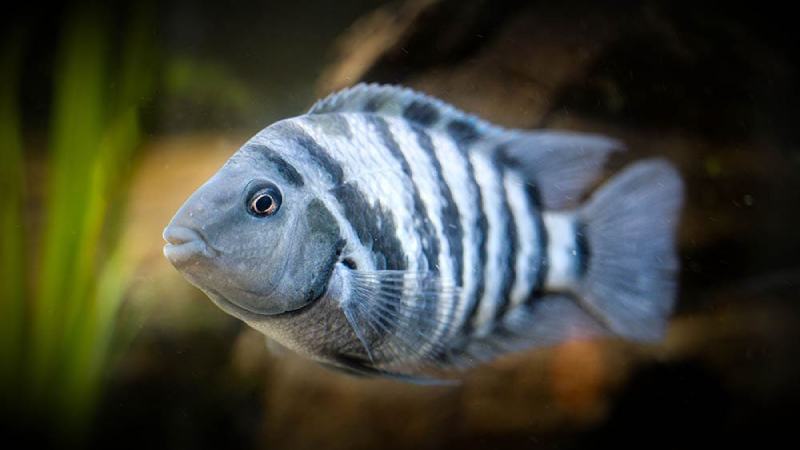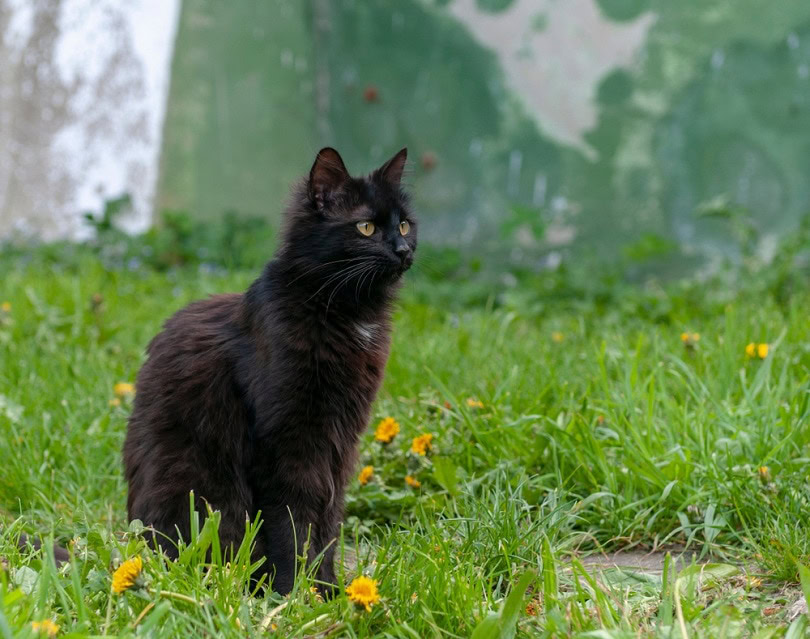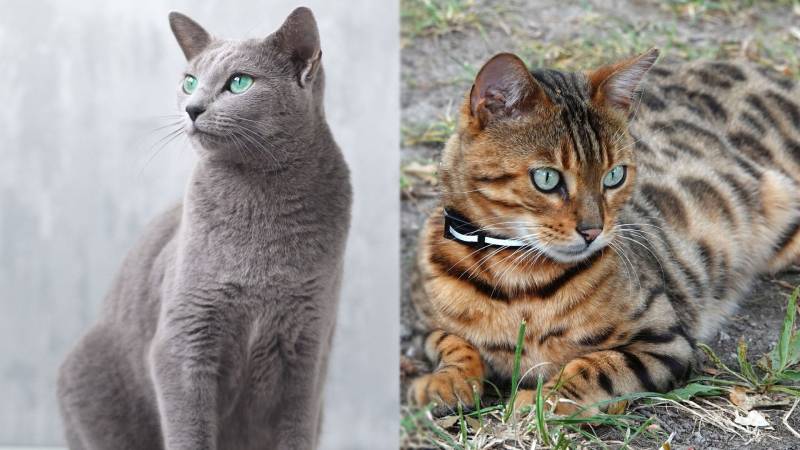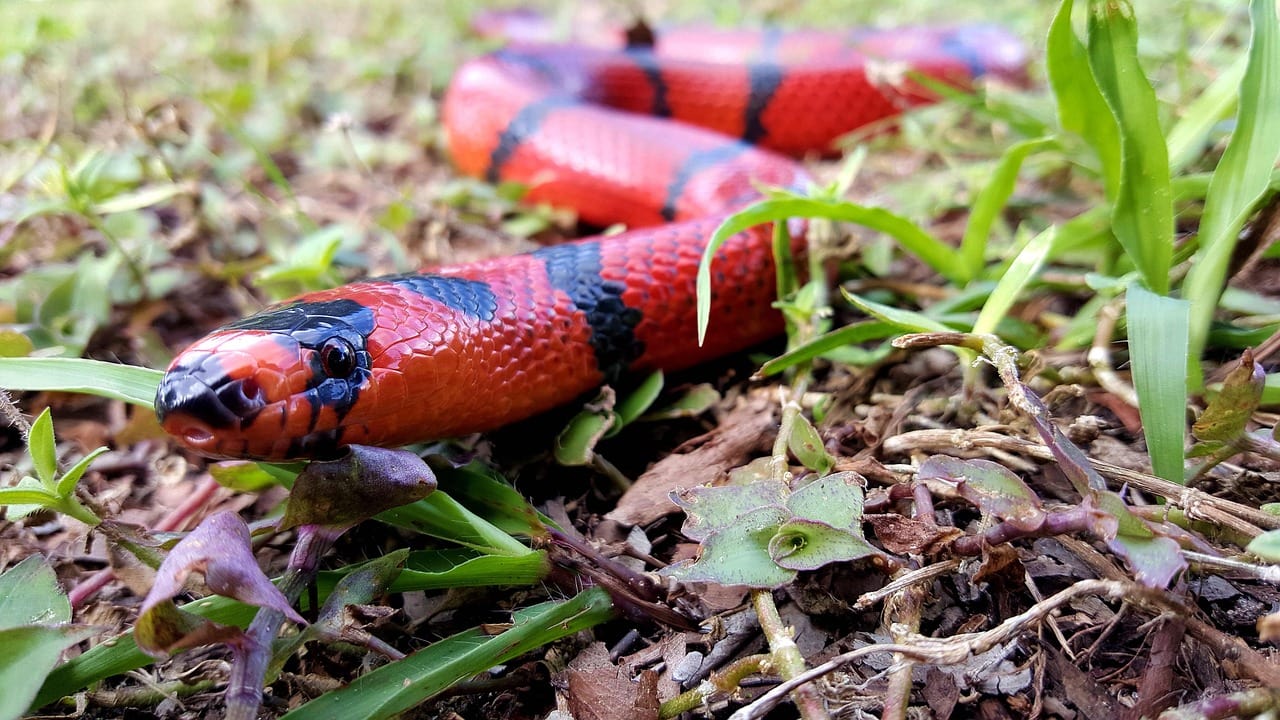Click to Skip Ahead
Cichlids are a beloved group of fish in the aquarium world, but they can also be complicated to keep. One of the most popular cichlid species is the Convict cichlid, also known as the Zebra cichlid. This aggressive fish is best suited for intermediate to experienced fishkeepers.
| Size: | 4–5 inches |
| Lifespan: | 8–10 years |
| Similar Breeds: | Other South American cichlids |
| Suitable for: | Intermediate hobbyists and professional fishkeepers |
| Temperament: | Aggressive, territorial |
The Convict cichlid gets its name from the black-and-white stripes it sports all over its body, giving it the appearance of a prisoner. The black-and-white stripes also give it the alternative name of Zebra cichlid. This is a South American species that can be very territorial, making it a poor option for community tanks. If you’re interested in this beautiful but complex fish, keep reading.
Convict Cichlid Breed Characteristics

Convict Cichlid Cost?
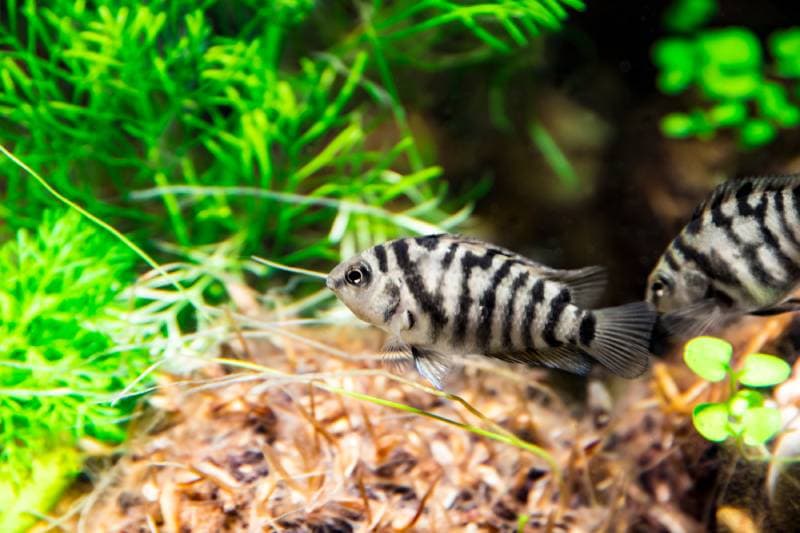
Convict cichlids are common, so you shouldn’t have problems finding one. Aquatics shops, pet stores, and online vendors sell Convict cichlids. You can expect to spend between $4 and $10 for a single fish. They are not community fish, so you don’t have to worry about buying multiple fish. Keeping a male and female fish together is possible if you’d like two fish.

Sociability of the Convict Cichlid
Do These Fish Make Good Pets?
The Convict is a beautiful fish that is interesting to watch. It’s considered to be hardy and a relatively low-maintenance fish. They are not considered a good option for beginners because of their territorial, aggressive temperament. They could be suitable for a beginner who only wants to keep one fish, but only experienced aquarists should attempt to keep Convict cichlids in community settings.
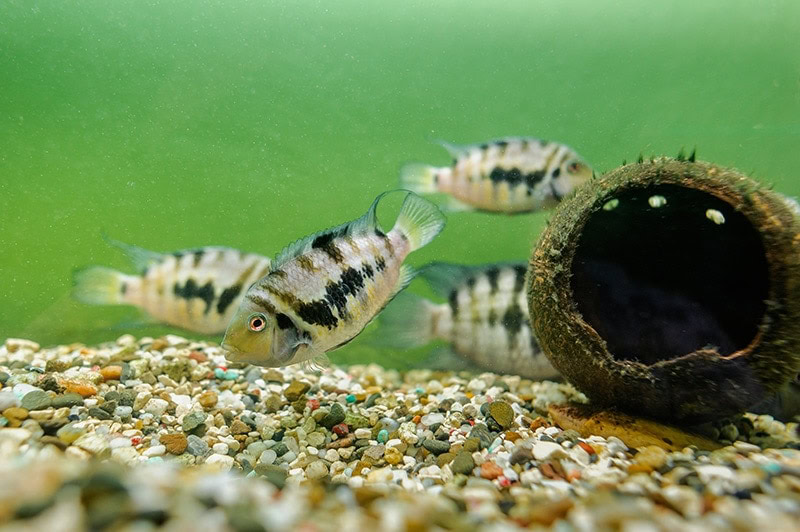
Does This Fish Make a Good Tank Mate?
No, the Convict cichlid is not a good tank mate for most fish, including other Convict cichlids, most of the time. They are not suitable for most community tank setups. Males should not be kept with other male Convict cichlids, although a male-female pairing can often work with proper management. Some tank mates are suitable for the Convict cichlid, including many types of catfish and other hardy bottom dwellers.

Care Guide & Tank Set Up
Water Quality, pH & Temperature
This fish is not picky about its water and can tolerate a range of water conditions. Maintaining high water quality will support the health of your fish and provide them with a longer life. The Convict cichlid needs tropical water temperatures between 79–84°F, although they can do well in temperatures as low as 74°F. They can tolerate a pH range between 6.5 and 8.0.
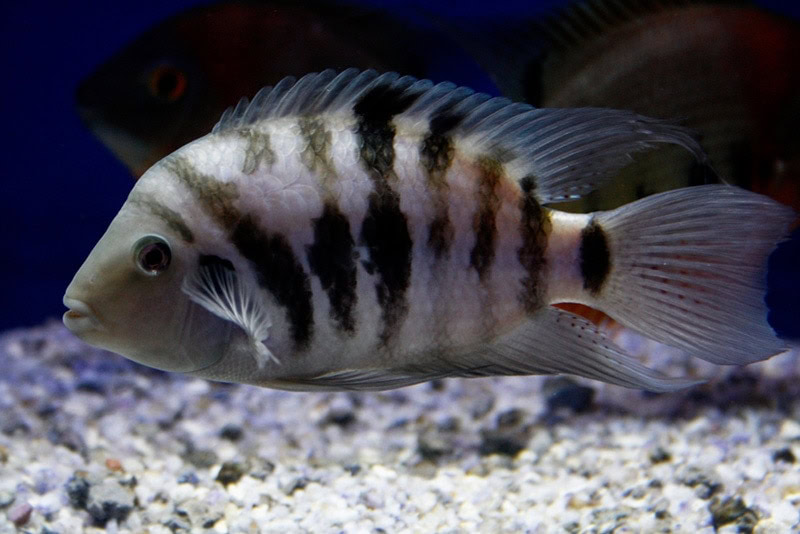
Substrate
Convict cichlids love to dig through their substrate, so sand is usually recommended. Aquatic soil could work, but it’s likely to become messy when the fish digs through it. Keep in mind that your substrate will also need to be able to support plant life, so you may have to add root tabs if using sand.
Plants
As previously mentioned, these fish like to dig, but they also like to uproot plants, so it can be challenging to keep a planted tank for Convict cichlids. Hardy plants, especially those attached to surfaces, are ideal, including Java fern, Java moss, and Anubias. Cryptocorynes, Echinodorus, and Vallisneria are also suitable options.
Lighting
There are no lighting needs specific to the Convict cichlid, but they may need to be slowly worked up to bright tank lights. Aim to provide a regular day/night lighting cycle, and remember to ensure your light is capable of supporting the live plants in the tank.
Filtration
Convict cichlids are not overly messy fish, so a filtration system that is rated for the size of the tank that your fish are in is suitable. Hang-on-back and canister filters are the ideal options for them in most situations. If keeping Convict cichlids with messy tank mates, like Plecos, you should beef up your filtration system to account for the heavy bioload.
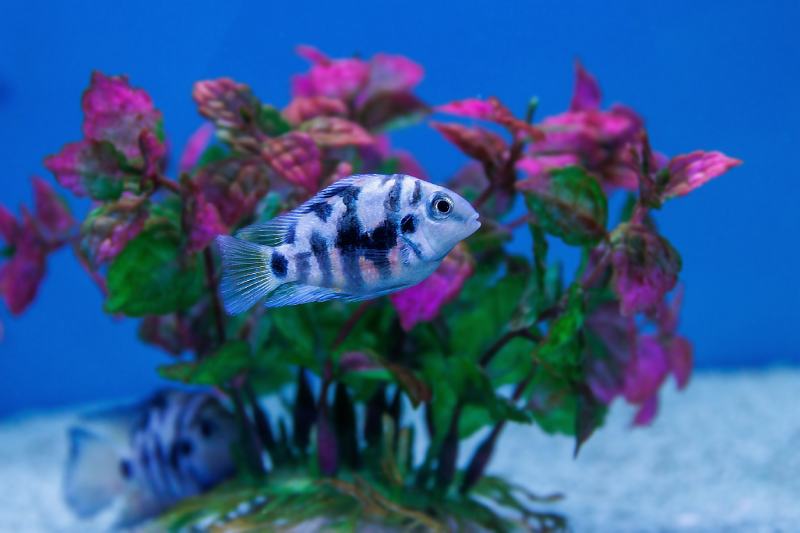

Things to Know When Owning a Convict Cichlid:
Food & Diet Requirements
Cichlid-specific pellets are a great option for feeding your Convict cichlid. Choose a high-quality pellet that is high in protein. These fish are omnivores, so a varied diet is essential to their health. While a high-quality pellet should be the base of your Convict cichlid’s diet, you can also provide treats like mosquito larvae, brine shrimp, bloodworms, and algae sheets.
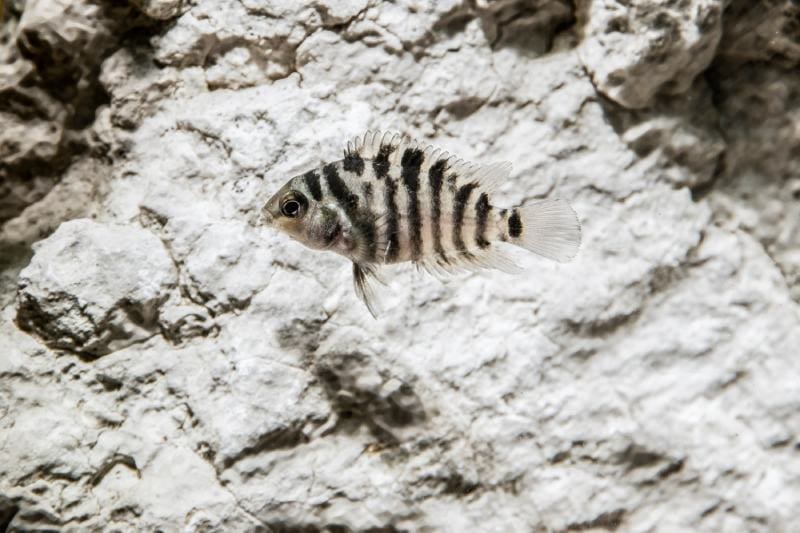
Size & Growth Rate
Convict cichlids are rapid growers when they are very young. Their growth will slow as they become juveniles and enter adulthood. It’s not uncommon for a Convict cichlid to take up to 2 to 3 years to reach its maximum adult size.
Varieties
There are multiple varieties of Convict cichlids. They all have distinctive stripes, but different colorations do occur. Common varieties include albino, leopard, yellow belly, red phantom, black barred, gold, blue, and electric blue. Some pattern differences between varieties exist, but all are identifiable as Convict cichlids.
The different varieties of Convict cichlids are the product of selective breeding. In the wild, varieties outside of the usual zebra-type stripes are very uncommon. Albino fish can occur in the wild, but their color often makes them easier for predators to spot, giving them a shorter lifespan.
Lifespan and Health Conditions
With proper care, a Convict cichlid can reach 8–10 years old. They are hardy fish that are tolerant of a variety of water conditions. If kept in an appropriate tank environment, you can expect your Convict cichlid to be healthy. If kept in a tank with other fish, especially inappropriate tank mates, your Convict cichlid may become stressed, which can lead to illnesses and death.
Male vs Female
It isn’t usually difficult to tell the difference between male and female Convict cichlids. Males are larger than females and have a larger nuchal hump, which is a bump on the forehead or top of the head. Females may have a nuchal hump, but it is smaller than that of male Convict cichlids. In many cases, females lack a nuchal hump altogether.
Aside from being larger, males also have larger fins in comparison to their body size than females. You can also look at your fish’s anal opening to determine their sex. Males have a slightly protruding opening, while females have a flat, broad opening.


Final Thoughts
The Convict cichlid is a neat fish that many people enjoy keeping. They need plenty of space, and they aren’t a good option for community tank setups. If you’re hoping for a fish that will get along with tank mates, it’s best to skip the Convict cichlid. The Convict cichlid is also not a particularly nice fish, so you can expect it to attack or bully other tank mates, regardless of size.
Featured Image Credit: Bernsten, Shutterstock
